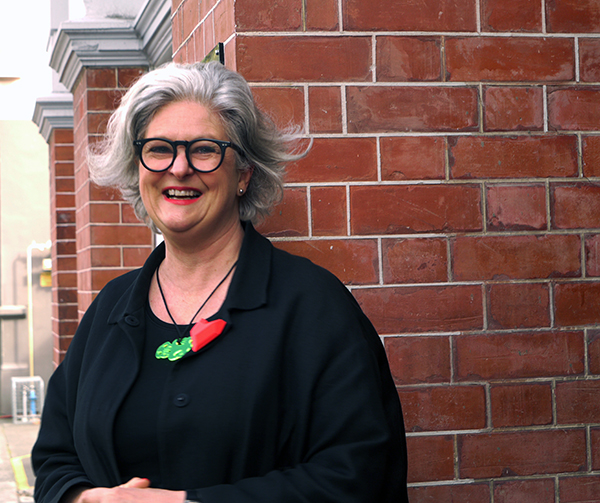Vernon database connects artworks and people
Behind the scenes at the Sarjeant Gallery over 8,000 items are recorded and managed by means of highly sophisticated collection management software. New Zealander, Bil Vernon, designed the software in 1985 and it was the world’s first PC based collection management system (CMS). It is now widely used by museums and galleries, both nationally and internationally. The Whanganui Regional Museum also uses the system.
The Sarjeant has a seasoned Vernon Systems consultant to manage the system. Jennifer Taylor-Moore, the Sarjeant’s curator of collections, proactively purchased the software while working at Te Manawa in Palmerston North. She said the Vernon system made a huge difference making collection information more accessible to staff.
“I had a lot of contact with the Vernon office implementing it and before I left New Zealand to live in London, they phoned and offered me a job to work for them in the UK. She became a representative for Vernon Systems providing training and support, also the promoting the system to potential users in the United Kingdom, Europe and North America. “It’s powerful and useful at different levels. Because it has been developed over such a long period of time, it has many sophisticated tools and features. It’s a very clever and flexible system.”
During the Sarjeant’s recent collection move Vernon CMS was extremely useful for recording information: successfully tracking and recording the location changes of 8,300 items; doing bulk updates and maintaining accurate information throughout the process. She says the Auckland based company was and still is very supportive to their customers, and to their team members working in different time zones. “I was doing an installation of the system in Zurich for the high profile Thyssen-Bornemisza private collection. There was a fault with the disk and it wouldn’t install so I had to phone one of the New Zealand staff at 2:00 am (NZ time) and they helped me sort it out.”
She says the company is “very much like a family,” and in fact one family member, Bil Vernon’s niece Nicola, moved recently to Whanganui.
Ms Vernon remembers her family, originally farmers from Raglan, pitching in and helping out when Mr Vernon and his partner Denis Cohn established a contemporary art gallery in the 1970s in Auckland. “At that stage Bil was still working in computing and my mother ran the gallery with Denis. The books were done on a Sunday afternoon around our table. As children we would go to openings and got to know a lot of the artists.”
She also remembers Bill Milbank, then director of the Sarjeant, attending openings and buying art works such as a Madonna and Child woodblock print by Philip Clairmont that remain in the Sarjeant Gallery collection today.
It was when their Auckland gallery closed after 15 years of operation that Mr Vernon and Mr Cohn set about developing a computer system to record and manage works of art. Mr Vernon continued developing and enhancing the system and in 2009 the company launched eHive, a web-based collection cataloguing system, designed so that galleries, museums and private collections could catalogue and publish their collections online.
Ms Vernon’s move to Whanganui has renewed and strengthened her connection with the Sarjeant, initiated by the work of her uncle and his partner. “I’ve known about the Sarjeant for a long time. I have recently joined the gallery’s Thousand Star initiative, a fundraiser for the redevelopment project and I actively encourage others to follow suit. It’s a brilliant idea, a very affordable way for people to get behind this important project which will see earthquake proofing and the gallery extension completed in 2020.”
Helen Frances


